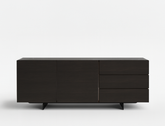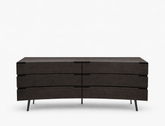Timeless Traditional Interior Design Ideas

When embarking on your home renovation or interior design project, many homeowners tend to shy away from traditional interior design styles. While it may seem intimidating to bring together intricate elements in a cohesive space, traditional interior design offers a timeless appeal that can infuse your home with warmth, elegance, and sophistication.
If you're someone who admires the charm of classic decor, you’re in the right place. Traditional interior design has a long-standing reputation for its ability to create inviting, comfortable, and luxurious spaces, and it remains one of the most enduring styles in the world of interior design.
Defining Traditional Interior Design for HDB Flats
Traditional interior design is deeply rooted in the aesthetics of classical European decor, bringing a sense of harmony and balance to any home. It focuses on symmetry, ornate furniture, and lavish decorative elements, which all combine to evoke a feeling of timeless grandeur. Even in modern homes, including HDB flats, traditional interiors can be achieved by thoughtfully incorporating rich textures, elegant furniture pieces, and classic design principles. Whether you’re renovating a spacious home or a more compact space, the essence of traditional design can elevate your interior.
A Brief History of Traditional Interior Design
The origins of traditional interior design trace back to the 18th and 19th centuries, during which Europe was heavily influenced by the architectural grandeur of ancient Greece and Rome. This fascination with classical elements inspired the creation of lavish homes adorned with luxurious furniture, intricate details, and grand architectural features.
As the Arts and Crafts movement of the 19th century rejected the mass-produced goods of the Industrial Revolution, a new focus on craftsmanship emerged. Homes of this era began showcasing handmade furniture and decorative items that highlighted artisanship, which continues to be a key feature in today’s traditional interiors.
Essential Elements of Traditional Interior Design
When creating a traditional interior design for your HDB flat or any other living space, it's important to understand the key components that define this style. Here are the core elements that contribute to a successful traditional interior:
1. Muted Colour Palette
Traditional interiors typically feature a refined and subdued colour palette. You’ll find shades of beige, cream, ivory, and taupe as the foundation for the space. While these colours establish a neutral base, muted accents like greens, blues, and pinks may be incorporated to provide subtle pops of colour. These tones contribute to an overall atmosphere of understated luxury and comfort.
2. Elegant Furniture
Furniture is at the heart of traditional design. Most traditional furniture pieces are crafted from wood and display intricate carvings, curves, and embellishments. Upholstered items such as sofas and armchairs often feature fabrics like velvet, silk, or brocade, adding a sense of indulgence. Pieces are often substantial and designed with a classic silhouette, making them stand-out features of the space.
3. Luxurious Textiles
In a traditional setting, textiles play an essential role in creating a plush, inviting environment. Fabrics such as silk, damask, and brocade are commonly used for curtains, bedding, and upholstery. These materials offer both texture and a visual richness that complements the overall design scheme. Patterned fabrics, especially floral and damask designs, are popular and add an air of sophistication.
4. Decorative Mouldings and Millwork
Traditional interiors are characterised by their attention to architectural details, including decorative mouldings, cornices, and ceiling medallions. These elements lend an air of grandeur to the space, reinforcing the sense of elegance. Wainscoting, panelled walls, and crown moulding can be integrated into your HDB flat to bring in a layer of traditional charm, even in a contemporary setting.
5. Classic Lighting Fixtures
Lighting plays a critical role in traditional interior design. Chandeliers, particularly those adorned with crystals or intricate details, are an iconic feature in many traditional homes. Sconces and decorative lamps also add a warm, ambient glow while enhancing the room's visual appeal. Opt for lighting fixtures with finishes such as brass or bronze for an authentic traditional look.
6. Symmetry and Balance
Symmetry is a cornerstone of traditional interior design. This design style embraces balanced layouts and mirror-image arrangements to create harmony and visual order. Whether it's pairing armchairs on either side of a fireplace or arranging artwork in matching frames, symmetry brings a sense of calm and structure to the space.
7. Natural Materials
Traditional interiors are rich in natural materials such as wood, marble, and stone. Wooden furniture pieces often feature deep, rich stains or finishes that highlight the natural grain, while stone elements like marble or granite are commonly used for countertops and flooring. The inclusion of these materials adds warmth and authenticity to the design.
Tips for Incorporating Traditional Design into Your HDB Flat
Bringing traditional design into a modern HDB flat may seem like a challenge, but with the right approach, you can create a timeless look. Here are some tips to help you incorporate traditional elements into your space:
1. Focus on Ornate Details
In a traditional interior, it's all about the details. Look for furniture that features intricate carvings, ornate legs, and embellishments. Adding decorative elements like crown moulding or wainscoting to the walls can enhance the sense of luxury. Accessories such as vases, candlesticks, and sculptures should also feature elegant details to complete the look.
2. Choose Luxurious Fabrics
Invest in high-quality fabrics like silk and velvet for your curtains, upholstery, and bedding. These textiles create an indulgent feel and help convey the traditional aesthetic. Don't be afraid to layer fabrics to add depth and texture to the room.
3. Incorporate Classic Patterns
When choosing fabrics and wallpapers, opt for classic patterns like floral, damask, or stripes. These patterns are timeless and work well in any traditional setting. To avoid overwhelming the space, select patterns that complement each other and use them strategically across different elements.
4. Decorate with Lighting
A stunning chandelier can serve as the focal point of a traditional living room or dining area. Complement the chandelier with wall sconces or table lamps that feature intricate designs and warm finishes. Lighting should not only be functional but also enhance the beauty of the space.
5. Mix Old and New Pieces
Don’t hesitate to combine vintage and modern pieces in your traditional design. For example, you can place an antique wooden sideboard next to a contemporary glass coffee table. Mixing old and new adds character and prevents the space from feeling too formal or rigid.
6. Create Symmetry
Achieving balance is key in traditional design. Arrange furniture in pairs, such as two matching sofas facing each other or identical lamps on either side of the bed. This attention to symmetry enhances the sense of order and harmony in the room.
Frequently Asked Questions about Traditional Interior Design
Q: Can I use traditional interior design in a small HDB flat?
A: Absolutely! Traditional design can work beautifully in small spaces if you focus on carefully selecting furniture that fits the scale of the room. Opt for fewer but high-quality pieces that carry the essence of traditional style, and avoid overcrowding the space with too many decorative elements.
Q: What types of furniture are best for a traditional living room?
A: Traditional living rooms typically feature substantial wooden furniture with elegant designs. Look for sofas and armchairs with upholstered fabrics like velvet or silk, and tables with carved details. Complement the furniture with classic accessories like ornate mirrors and vases.
Q: Can I mix traditional and modern styles in my home?
A: Yes, blending traditional and modern elements can create a unique and dynamic space. For instance, you can pair a vintage wooden dining table with sleek, contemporary chairs. Mixing styles allows you to infuse your personality into the design while maintaining the timeless elegance of traditional decor.
Final Thoughts
Traditional interior design is an enduring style that can be adapted to any space, including HDB flats. By incorporating luxurious fabrics, ornate furniture, and classic decorative elements, you can create a home that exudes warmth and timeless sophistication. Whether you’re renovating a small flat or a larger home, traditional design can transform your living space into a stylish and welcoming environment.
To help you achieve your dream traditional interior, consider Prestige Affairs Furniture, where you’ll find a wide selection of premium furniture and home accessories that bring timeless elegance to life.







